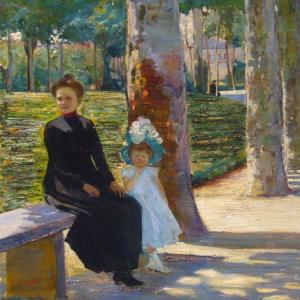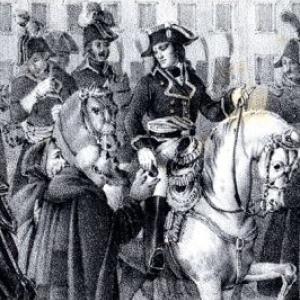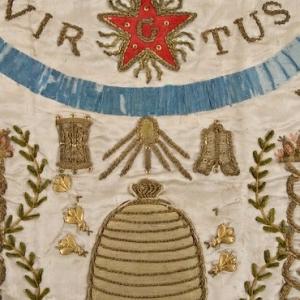Scheda
Giovanni Battista Martinetti was born in Bironico (Canton Ticino) from Giovanni Antonio and Lucia Leoni: he was the second of five children. In 1775 he joined his father in Bologna, where he received the protection of the count Jacopo Zambeccari. At the age of eighteen he was elected prior of the German nation and he remained in office for two years. While attending the Academy he won the prize Fiori (1780- 83), the one for architecture and the Marsili one.
Shortly before 1795 he designed Villa Ravone (at the time known as Spada, nowadays as Museo della Tappezzeria) using refined neoclassical motives. He took part in the contest for the conclusion of the façade of the Duomo in Milan, while in 1797 he intervened in Bologna in the municipal building under the will of Antonio Aldini along with Giovanni Bassani and other painters and sculptors (Antonio Basoli, Mauro Gandolfi, Serafino Barozzi, Giovan Battista Frulli, Pelagio Palagi and other figurists and quadraturists). In 1798 he restructured Aldini’s palace in Strada Maggiore. He redesigned the terracotta cornice with frieze on the façade, extending it to the near house, and divides the large hall into two rooms: the Sala della Virtù and the Sala delle Feste. In the same year together with Giovanni Bassani he presented a project for the enlargement of Piazza dei Celestini but the project of the new square will not go beyond the declaration of intent. In 1801 he took part in the project of the construction of the “Foro Bonaparte” of Milan. The square in front of the Archiginnasio has been named Square of Peace. In the middle of this square was planned the construction of a column (designed by the architect Giovan Battista Martinetti) on the summit of which we can find a statue representative of Peace and Prosperity. However, the monument was never completed. On the 24th of February, 1802, he married Cornelia Rossi di Lugo in the church of San Lorenzo di Porta Stiera; the couple became one of the most fashionable in Bologna. In her abode, located in via San Vitale, Cornelia became the entertainer of one of the most renowned cultural gatherings, where she hosted personalities from all over Europe.
On 19th May 1805 the Teatro del Corso opened: the owner and manager Giuseppe Badini distributed forty “carats” with each of whom each carat-owner bought a stage with a joined changing room. Among the buyers there was also the engineer Martinetti himself. On 18th June on the occasion of the entrance of Napoleon and his wife in Bologna, a triumphal arch in ionic style, decorated with bas reliefs and inscriptions, was erected outside Porta San Felice. It was designed by Martinetti together with Giuseppe Tubertini and Giovanni Bassani. Porta San Felice is itself adorned with reliefs and inscriptions by Pietro Fancelli. In July of the same year Martinetti developed the final project for the restoration of the area of Porta San Donato, destined to host the “Royal establishments of Botanica, Agraria, Chimica and the Academy of Belle Arti in Bologna”. Working on the construction of the “Giardino Botanico”, Martinetti set the urban layout of the area: a trident of which southern summit is the former convent of Sant’Ignazio. From here there three avenues start: the central one connected to the Palazzina della Viola; the two obliques lead to two symmetrical pentagonal areas, belonging to the Orto Botanico and to the Orto Agrario. On the hill of Montagnola the construction of large public gardens is planned. The works are commissioned to Martinetti, who creates a large space with a circular base, with four squares on the outside, each with a tank in the middle which will be removed in a subsequent arrangement. It is also decided to demolish the Market column, in order "to make that location symmetrical”. The works of the garden ended in 1808. The Montagnola became then "the fashion walk" of Bologna.
In May 1807 twelve people from Bologna founded the Agricultural Society. Among them there was Martinetti himself. In October 1809, the news that Antonio Canova, had agreed to stay in Bologna, as a guest of the two spouses, was welcomed in the cultural clubs of Bologna; the due honours were prepared quickly. While the preparations were underway, the great sculptor decided to go back and head towards Rome. This change caused "a bitter disappointment". However, his bolognaise friends decided to pay homage to him: in January 1810 the pamphlet “For the awaited arrival of Canova in Bologna” came out and on the following June 28th in the Academy a bust was inaugurated in his honor. The ceremony is preceded by an oration composed by Giordani. Finally on July 29th 1810 Antonio Canova stopped in Bologna. He was a guest, together with his brother, of Giovanni Battista Martinetti and of his beautiful consort Cornelia, by whom the great sculptor was charmed; he called her his "brown Venus." He returned to the city in December, still a guest of the Martinetti. The relationships with the bolognaise environment continued even after his departure. Canova wass back in Bologna in May 1811, and during his permanence he modeled two plaster busts of Cornelia.
Between 1811 and 1816 a great villa was built in the neoclassical style in order to celebrate Napoleon. On 3rd October 1814 in a part of the convent of the Carmelites of San Martino, a theater opened the door; its project is owned to Martinetti and the architect Giuseppe Nadi. In 1796 a project for the construction of the road to the Bagni of Porretta, along the Reno, had been approved, but, due to technical difficulties, the Porrettana road was ended only in 1843. In 1820 Felice Giani painted for the third time in the Martinetti’s house. The friendship between the engineer and the painter had strengthened a lot, as we can deduce from the letters written by Ludwig Guttembrunn to the painter on November 12th 1810:“My dearest friend, mister Giani. I arrived in Milan without any complication some days ago(…)I kindly ask you to wish Mister Martinetti and his lovely spouse the most beautiful things, and that her beloved conception kept me company during my whole trip”. Many other letters will follow this one.
In September 1822 the Martinetti organised three worldly events to celebrate Antonio Canova's visit to the city. On the first two occasions torchlight and dances were held. The third "meeting" was particularly dedicated to the sculptor and focuses on the exhibition of two of his master works. However Canova appeared to be "very ill-health" and everyone was saddened to witness his suffering. A few weeks later the news of his death came. In 1826 was inaugurated in Porretta one of the last engineer’s works, the establishment of the Donzelle. Giovanni Battista Martinetti died on October 10th 1830. His wife devoted him a simple but large and elegant monument in the West Loggia of the Certosa Cemetery. After her death, in 1867, his nephew Germano Rossi rented the building to the Ungarelli Institute.
Traduzioni cura di Amelia Franzoni, Greta Giudici, Camilla Costa del Liceo ginnasio Luigi Galvani, classe 3Q, anno 2017-2018.








